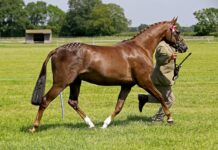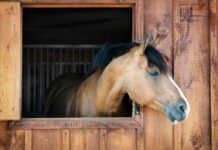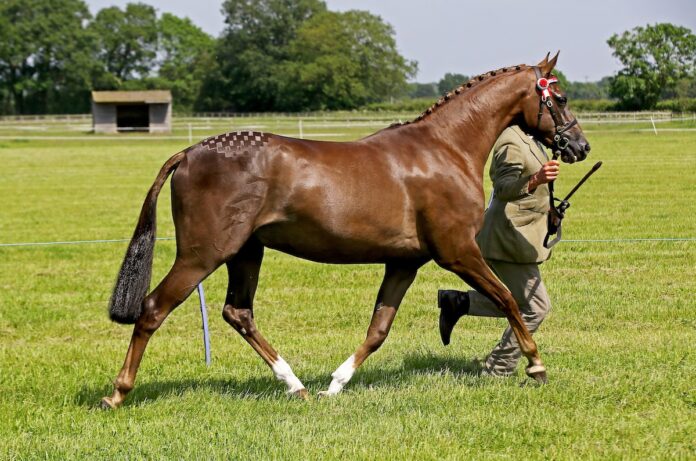Managing equine weight loss
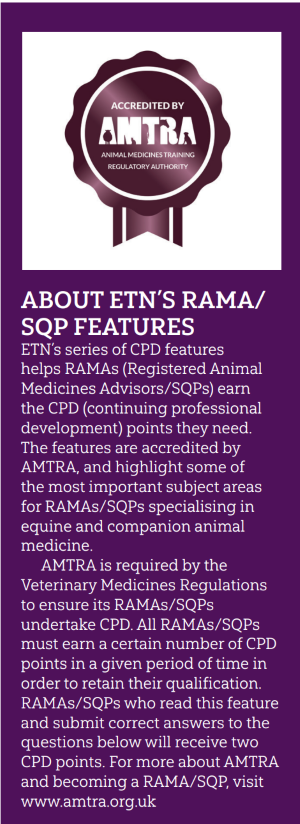
By Anna Welch BVSc, BSc, MRCVS. Veterinary Nutrition Director, TopSpec.
Weight management is important for a horse’s health and welfare, yet research indicates that up to 70% of horses and ponies in the UK are overweight or obese. There are several factors that can contribute to excessive weight gain, including an inappropriate diet (e.g. unbalanced or overfeeding), lack of exercise and metabolic disorders - all of which may need to be addressed.
As a retailer, you will be a valuable first point of contact for many horse owners seeking guidance on managing their horses’ weight. Therefore, it is important to understand the different aspects of formulating a suitable diet plan and management regime but also to encourage owners to consult an experienced equine nutritionist and vet when necessary.
The importance of effective weight management
Effective weight management is essential not only for a horse’s physical condition and athletic performance but also for reducing his or her risk of health problems such as Equine Metabolic Syndrome (EMS)/ Insulin Dysregulation(ID), laminitis, osteoarthritis, musculoskeletal injury and respiratory issues.
Breeding animals should also be carefully managed, as being overweight can disrupt hormonal balance leading to reduced fertility, irregular oestrus cycles and complications during pregnancy.
Additionally, it can increase the risk of developmental orthopaedic disease in youngstock.
The key to success
A tailored approach is the key to a successful and sustainable weight loss program. This approach takes the individual horse’s needs into account, as well as any limitations the owner may have in refining his or her management practices.
Every horse is unique in terms of breed, health status, activity level and metabolism, all of which will influence their response or ability to respond to changes in diet and exercise. Similarly, an owner’s experience, time constraints, management restrictions and even finances may also need to be considered to help maximise compliance.
What is ideal condition?
Research to understand owners’ views on appropriate condition has shown that they consistently underestimate their horse’s weight, sometimes viewing fat as a symbol of health.
Helping owners to understand what constitutes ideal body condition for an individual horse is crucial, as it highlights the need for change, provides a clear goal to strive for, and offers focus during what can be a challenging journey.
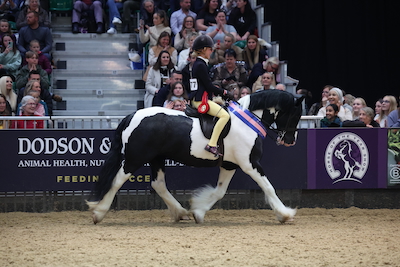
To assess condition, owners should feel areas such as the ribs, neck, withers, shoulders and hindquarters, checking muscle tone and for fat coverage or deposits. Body condition score systems are available and are used to evaluate these areas, but there are limitations; they result in an average score, require experience to produce a meaningful and repeatable score, they have been found to be less precise for native breeds, and are slow to change in response to weight loss which can make monitoring progress difficult.
Ideal condition refers to a horse that is neither overweight nor underweight. They should have good muscle tone, and a light fat covering over the ribs without fat deposits. Underlying health issues, such as EMS/ ID and laminitis may need to be taken into consideration; it is preferable to maintain these individuals on the lighter side of ideal weight, whilst also being aware that fat deposits and a cresty neck may not completely disappear.
Monitoring weight management
Successful weight loss requires regular monitoring and fine-tuning. Therefore, using a measure that can be tracked over time will help, whether that utilises a weighbridge (if available) for a precise weight or a weigh tape/ length of string which estimates change. Taking measurements of key areas (e.g. belly girth and neck circumference) can help monitor improvements provided the technique is consistent each time. Keeping records of a description of body condition, as well as photos for a visual reference, can also be useful.
Ideally, no more than 0.5% to 1% of a horse’s bodyweight should be lost per week, ensuring a gradual and safe reduction over time. Regular assessments can signal the need for adjustments when, for example, rapid weight loss is identified (which can lead to other health issues) or weight loss begins to plateau.
The role of diet
Dietary management is fundamental to any successful weight loss program. Creating a balanced diet that meets a horse’s nutritional requirements is therefore essential for achieving and maintaining healthy weight loss.
Forage
The starting point for any feed regime for a horse should always be forage, and that includes overweight individuals or those prone to weight gain. Despite the need for a restricted diet, it is important that sufficient fibre sources are available to maintain a healthy digestive tract and hindgut microbial balance. Research indicates that no less than 1.5% of bodyweight of forage (dry matter) should be consumed over a 24-hour period, and horses should not stand for longer than 4 to 6 hours without forage.

Grass and hay can vary in their calorie content depending on the season and maturity/ stage of growth. Grass at this time of year is typically higher in calories so may need to be restricted. The best way to do this will depend on the facilities available but options include mixed grazing (e.g. with sheep), using a grazing muzzle, use of a bare paddock/ ‘sacrifice paddock’, track system, fencing a small area or strip grazing.
When stabled, or in a ‘sacrifice paddock,’ a low calorie, mature conserved forage should be used. Late- cut meadow hay is usually the most suitable option but may require soaking for between 3 and 12 hours in ample, cool, fresh water to reduce its water-soluble carbohydrates (mainly ‘sugar’) and calorie content. Using haynets with small holes or ‘trickle nets’ are useful for horses that can be greedy, to slow their consumption.
Some hay can be partially replaced by chopped straw, or good hygienic quality long fibre straw if it can be sourced, to extend forage availability and lower calories. Straw should only be fed to those with good dentition, and it should be limited to approximately 30% of the total forage ration (although this might be adjusted according to individual circumstances)
Calorie restriction
While owners may feel tempted to eliminate bucket feed completely to help their horse lose weight, this is not recommended despite forage supplying ample or excess calories in many cases. Supplementation is required to balance the diet for vitamins, minerals, trace elements and usually amino acids.
The ideal solution for healthy horses is to feed an appropriate top specification ‘lite’ feed balancer or multi-supplement. These will provide the micronutrients required but with minimal calories. There are also products specifically formulated to suit horses and ponies that do more than light work, elderly horses and ponies, those prone to laminitis, as well as breeding and young stock.
Potential hazards
It is important to help owners understand that they should never starve an obese or overweight horse, no matter how vital weight loss is (e.g. in recovery from acute laminitis or managing a tendon injury).
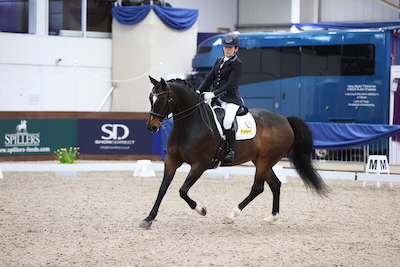
Hyperlipaemia is a potentially fatal consequence of mobilising body fat during starvation, where an accumulation of fat in the blood can result in organ failure (e.g. the liver).
Insufficient forage and spending extended periods (more than 4 to 6 hours) without fibre passing through the digestive system, will also increase the risk of gastric ulcers and hindgut acidosis (which increases the risk of e.g. loose droppings and colic). Stereotypical behaviours (e.g. windsucking and box walking) can also develop or worsen.
The role of exercise
Exercise complements dietary changes in a weight loss regime, although the intensity and duration of exercise should be tailored to the horse’s individual fitness level and needs.
Regular physical activity helps to increase energy expenditure, improve muscle tone, and enhance overall fitness, all of which are important for effective and sustainable weight loss. It can also help to control insulin levels. Exercise is not a substitute for an inappropriate diet, as research found that moderate exercise in the absence of dietary restriction had no effect on bodyweight.
Conclusion
Effective weight management is essential for maintaining a horse’s overall health and well-being. By combining a balanced, controlled diet with an appropriate exercise regime, weight loss can be achieved safely and sustainably. A tailored approach that considers each horse’s needs, as well as the owner’s limitations, is key to long-term success.
It is important to encourage owners to remain patient while making gradual changes that support their horse’s physical and psychological needs. For optimal results, it is highly recommended that you encourage your customers to speak to an experienced equine nutritionist to tailor this general advice and help with ongoing support.






